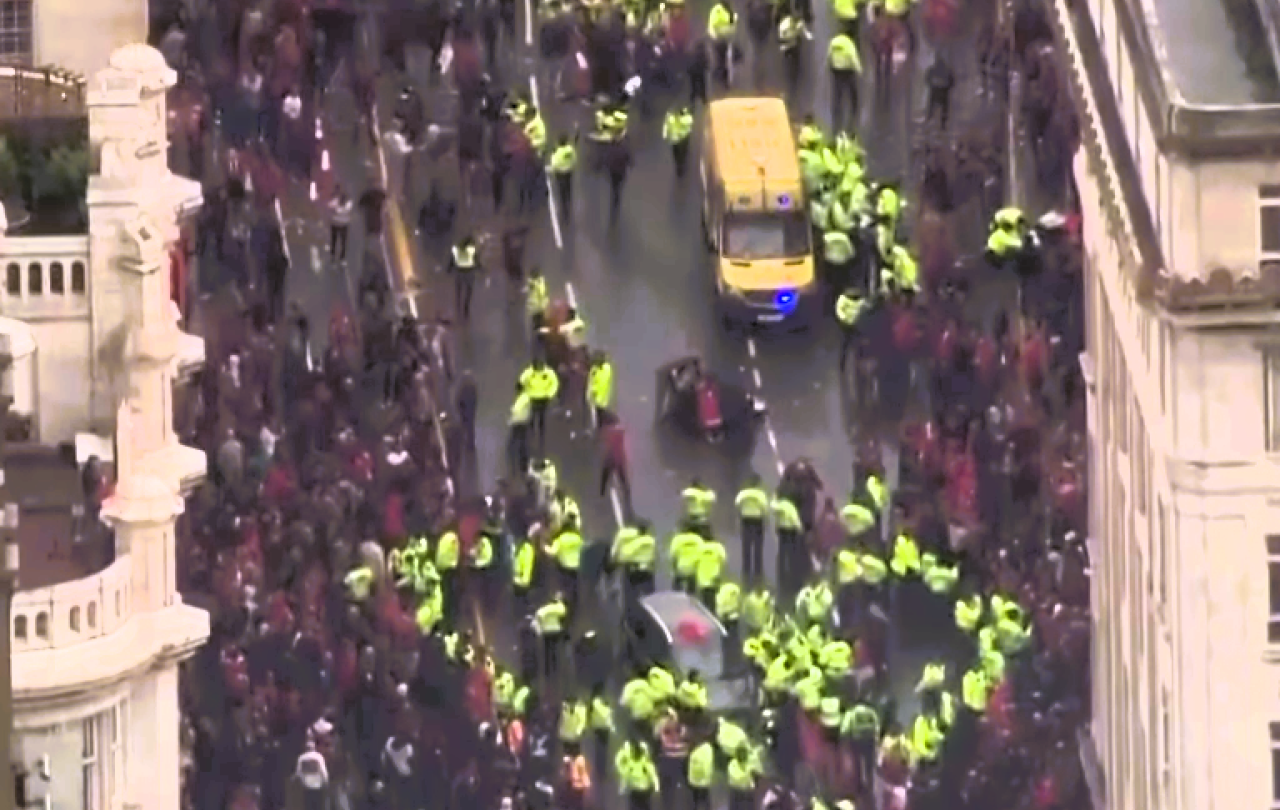
It is late afternoon on a rainy Monday. My students mooch through the door, filling up the seats in our overheated, clinically modern tutorial room. They are a particularly young class this term – nearly all teenagers still. The setting feels entirely the wrong for poring over texts that are thousands of years old, texts written by some of the earliest Christians, now displayed on flashy laptops and smartphones.
The first excerpt is short – part of a hand scribbled note by Ignatius of Antioch. He wrote it even as he was marched to his execution at the hands of the Romans.
Suffer me, my brethren; hinder me not from living, do not wish me to die… Suffer me to receive the pure light; when I shall have arrived there, I shall be a human being.
Ignatius shows no fear despite facing his impending martyrdom, I explain, because he goes to his death as one who was utterly convinced by the hope of resurrection. To him, death was life, and life was death.
From the mixture of expressions on the faces around the room, I can easily tell which members of the class have attended Professor Behr’s lectures on this week’s material, and which members of the class have attended only to their mattresses and duvets. (‘Twas ever thus with undergraduates.) “Let’s look at Professor Behr’s own chapter on the subject,” I suggest, adding with a certain emphasis, “It was your required reading for this tutorial.”
Reading Ignatius, along with some other texts from this period, Behr summarises the argument as follows: earthly life is a transitory thing, and driven by the fear of death, it becomes all too easy to focus on and hang on to this fleeting life. However, the Christian hope is that the self-sacrificing death of Christ, who gave up his life in the service of others, has transformed the reality of death. Death is no longer just the end of this life but the beginning of another one – a better, eternal life. And this, for each Christian, becomes the impetus to pursue one’s own journey towards self-sacrifice, towards laying down one’s earthly life for another, following in the example of Christ, just as Ignatius wished to do. Behr writes:
“Through Christ’s having ‘changed the use of death’ we are able to change the ground of our existence from necessity and mortality to freedom and self-sacrificial love…”
I glance around the room. A few students seem mildly interested, some others are gazing at their screens, scrolling. Perhaps their curiosity has been piqued by the chapter that they are meant to have already read? More likely they have zoned out and are flicking through TikTok. One guy at the back stares glumly out of the window, mouth half open, the one next to him is dismantling a ballpoint pen.
“Any thoughts?” I ask the room. Every pair of eyes is on me, and I know that there are thoughts – the silence is thick with them.
A few moments later, however, and all their eyes are on me. Why? Because in the second part of his chapter, Behr takes this argument of self-sacrifice, of death to life, and uses it as a lens through which to examine the specific human phenomenon of marriage. I read out a few well-chosen excerpts – juicy ones that include the words “eros”, “sexuality” and even “ecstasy” – and it is no surprise that a room full of drowsy teenagers becomes somewhat more alert.
It is through the natural human desire to be united with another person, argues Behr, that we are truly drawn out of ourselves, and by doing so we learn to give out of our own lives for the sake of the life of another. To commit one’s life and one’s body to another in marriage is the epitome of dying to self, even a kind of martyrdom. And, if marriage leads to parenthood, then the opportunity to live a life of self-sacrifice only increases. However hard it might be, those who are married, parenting, or both are driven by love to place the lives of their spouses and children before their own.
“Any thoughts?” I ask the room. Every pair of eyes is on me, and I know that there are thoughts – the silence is thick with them. But who will be brave? Patiently I stare them down. Eventually someone cracks, and a hand creeps up into the air.
“Yes, go ahead…” I encourage.
“Well… I think you should never be in a relationship where you have to do that!”
“OK.” We’re off. “Never have to do what, exactly?”
“Like, be expected to give up your life for someone else. Like, it’s your life. No one else has a right to ask for you to sacrifice yourself.”
The conversation went on from there, the class getting more and more animated, a polemic against the idea that marriage, or just long-term relationships in general, should involve the sacrifice of one’s ‘self’. A spouse, they insisted, should be someone who affirms and celebrates everything that you are, and who supports you in whatever dreams or ambitions that you want chase. And children? Well, they should only be brought into the equation to fulfil your dreams, not to limit them. Marriage is many things, but it should not be a sacrifice, less still a martyrdom.
Well, let us not be too hard on the optimism of youth. The optimism that imagines marriage and family life will be something that gives, and gives, and will never take anything away. How can they know – those who have never been awake at 3am with a projectile-vomiting toddler, and those who have never had to calmly negotiate over where all the money goes? It is the optimism of those who have never had to pass up on a job or an opportunity because it doesn’t fit in with the spouses’ promotion or the kids’ schooling. These, and a thousand other moments of self-sacrifice: the gritty realities of a daily choice to stick in a marriage (or any kind of long term relationship) and make it work.
This is a much slower kind of martyrdom, a decision made not once but daily, in a society where such decisions are frequently undone.
But is this gritty reality a giving up of life, or an embracing of it? Perhaps, like Ignatius, in this kind of death to self we actually find life. In a committed union, we carefully place our lives in the service of another, not because they expect us to, but because out of love we choose to. This is done, of course, in trust that the other person will do the same in return. There is no suggestion, either here or in Behr’s chapter, that someone should stay in a union where that placing of oneself is being merely used and abused. But where two people find a true mutuality in that laying down of self, well, love has funny way of making limits feel like a kind of freedom after all.
“Hinder me not from living…” writes Ignatius, as he is marched to his certain death. His eyes were filled with the image of new self, a better self, that would come to him all at once and suddenly through the laying down of his life for what he believed in. With a faith so strong, this may have been an easy kind of martyrdom – a decision made once, which could not, by him, be undone. But let us also hinder not those who choose to unite their lives to another. This is a much slower kind of martyrdom, a decision made not once but daily, in a society where such decisions are frequently undone. One day some of these young people will feel the call to this kind of death, and that in this death there is life. Hinder them not to die.





